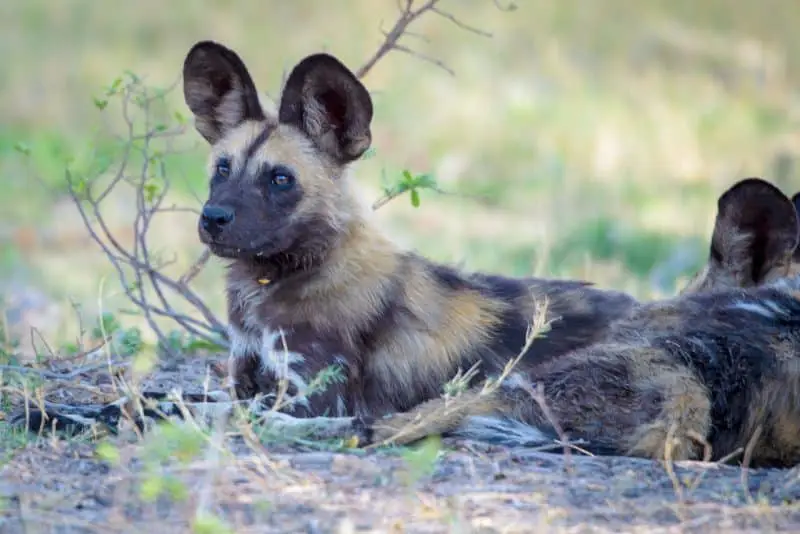Are you looking for The 5 Best Places to See African Wild Dogs? We collected everything on “Where to see African Wild Dogs”!
African Wild dogs are admired all around the world for their beautiful colors and their exceptional hunting techniques. These dogs are amazing to see in the world; if you’d like to learn more about these fantastic dogs, read our article that has everything about wild dogs!
Also, feel free to comment below on your thoughts or experiences with African Wildogs.
Key points
| Topic | Key Points |
|---|---|
| Behavior of African Wild Dogs | – Social and brilliant dogs – Live in packs of 7 to 15 members, sometimes up to 40 dogs – Dominant pair and cooperative behavior within the pack – Extensive range of vocalizations and greeting rituals |
| Hunting and Diet | – High-stamina hunters capable of maintaining a fast pace – Pack splits up during the hunt and uses coordinated strategies – Orderly feeding at the kill, with young and subordinate members eating first – Subordinate females support nursing females by regurgitating food |
| The 5 Best Places to See African Wild Dogs | 1. Kruger National Park, South Africa 2. Okavango Delta, Botswana 3. Ruaha National Park, Tanzania 4. Gorongosa National Park, Mozambique 5. Mana Pools, Zimbabwe |
| Interesting Facts about Painted Wolves | – Unique physique and keen senses – Close social structures and strong pack hierarchy – Nomadic nature and large territories – Coordinated hunting and high success rate – Threats from humans, diseases, and larger predators |
| Threats | – Accidental and targeted killings by humans – Viral diseases like rabies and distemper – Habitat loss and competition with larger predators – Listed as endangered with a declining population |
The 5 Best Places to See African Wild Dogs
| No. | Place | Country |
|---|---|---|
| 1 | Kruger National Park | South Africa |
| 2 | Okavango Delta | Botswana |
| 3 | Ruaha National Park | Tanzania |
| 4 | Gorongosa National Park | Mozambique |
| 5 | Mana Pools | Zimbabwe |
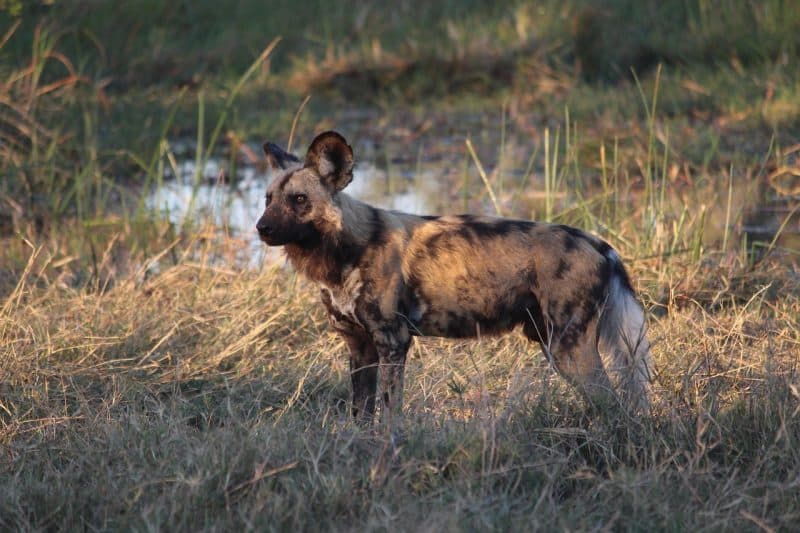
A list of the top five places to see African Wildogs follows as they are scattered fairly widely over Africa, predominantly in savannah-like terrain.
If you want to visit African Wildogs, look at the operators below who could help you.
The Kruger National Park
South Africa has been at the forefront of innovative efforts in African wild dog conservation. Recognizing the critical importance of preserving this species, a highly successful reintroduction program was initiated in the late 1990s. The realization that Kruger National Park was the last remaining area in the country with a viable population prompted this crucial initiative.
Over two decades, a dedicated effort unfolded, leading to the reintroduction of African wild dogs into multiple game reserves and national parks across South Africa. The outcome was a remarkable tripling of the country’s population of this captivating species.
While ongoing reintroductions persist, there’s a sentiment that sometimes the original remains unparalleled. The southern region of Kruger National Park, including surrounding game reserves like Thornybush, continues to host the highest population of African wild dogs in South Africa, making it the premier location for observing these remarkable animals.
Okavango Delta, Botswana
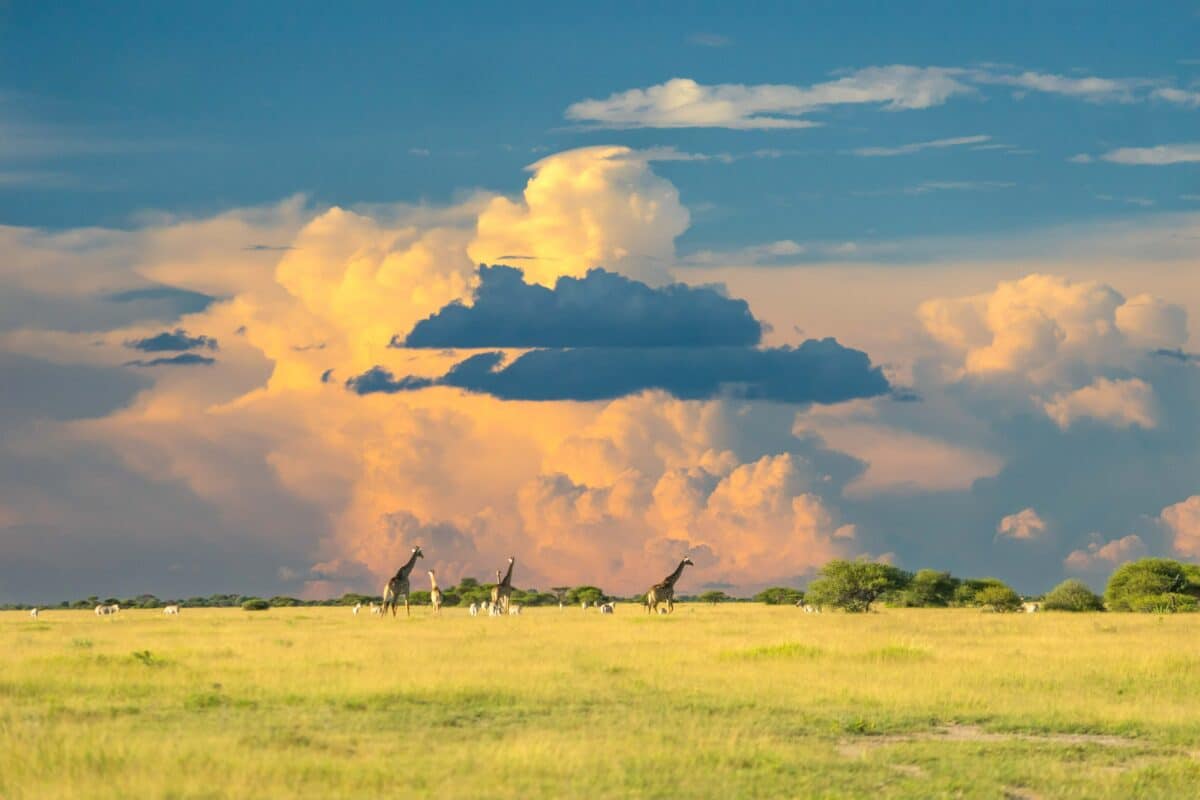
We believe you already have plenty of reasons to explore the Okavango Delta, given its untamed, verdant scenery and extensive array of wildlife. However, it’s noteworthy that this UNESCO World Heritage site boasts one of the most substantial African wild dog populations globally.
Regarded as the last stronghold for this species, embarking on a safari in areas like Moremi Game Reserve, Khwai, or venturing to Linyanti significantly increases your chances of catching a glimpse of a wild dog pack.
Ruaha National Park
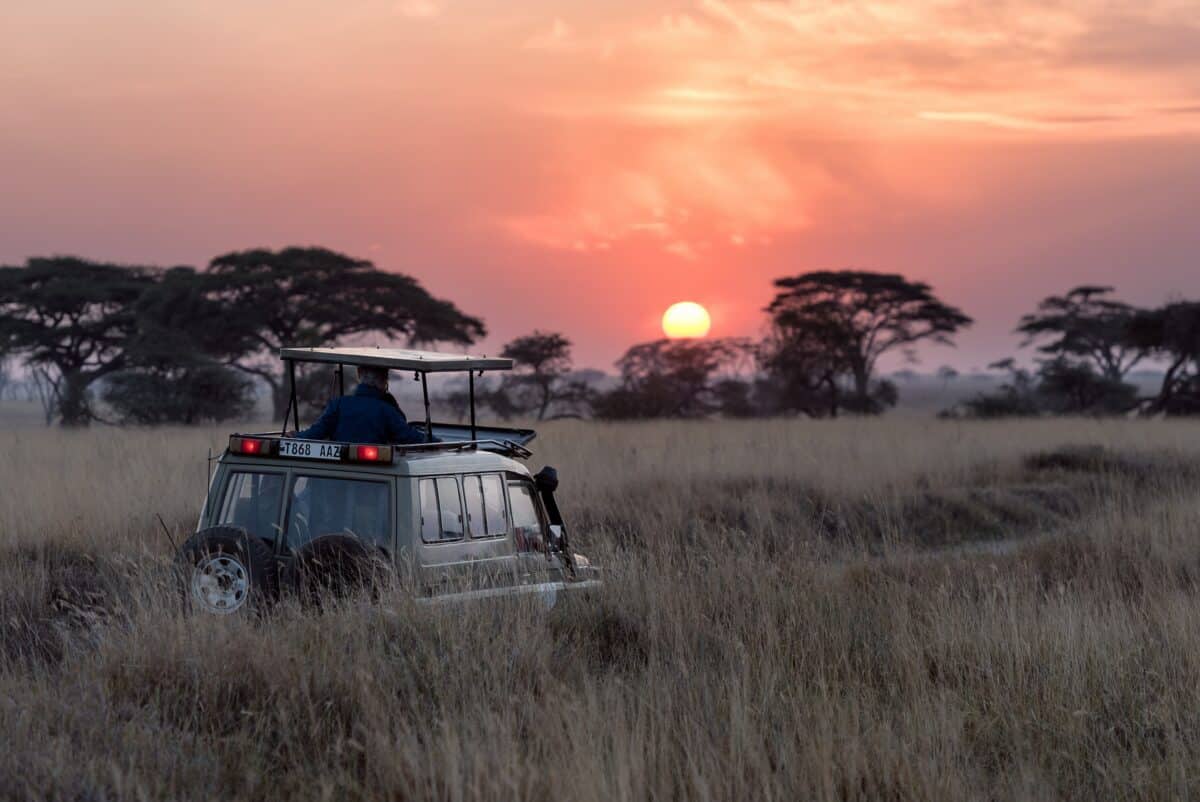
Ruaha National Park stands as one of the few remaining wilderness areas in Africa, providing an ideal habitat for African wild dogs that require expansive territories and prefer minimal contact with humans. Not only does Ruaha host the world’s third-largest population of African wild dogs, but it also accommodates 10% of the global African lion population. The dynamic interactions between these two predators offer intense and thrilling wildlife experiences.
Now, with at least two compelling reasons, consider making Ruaha your next safari destination.
Gorongosa National Park, Mozambique
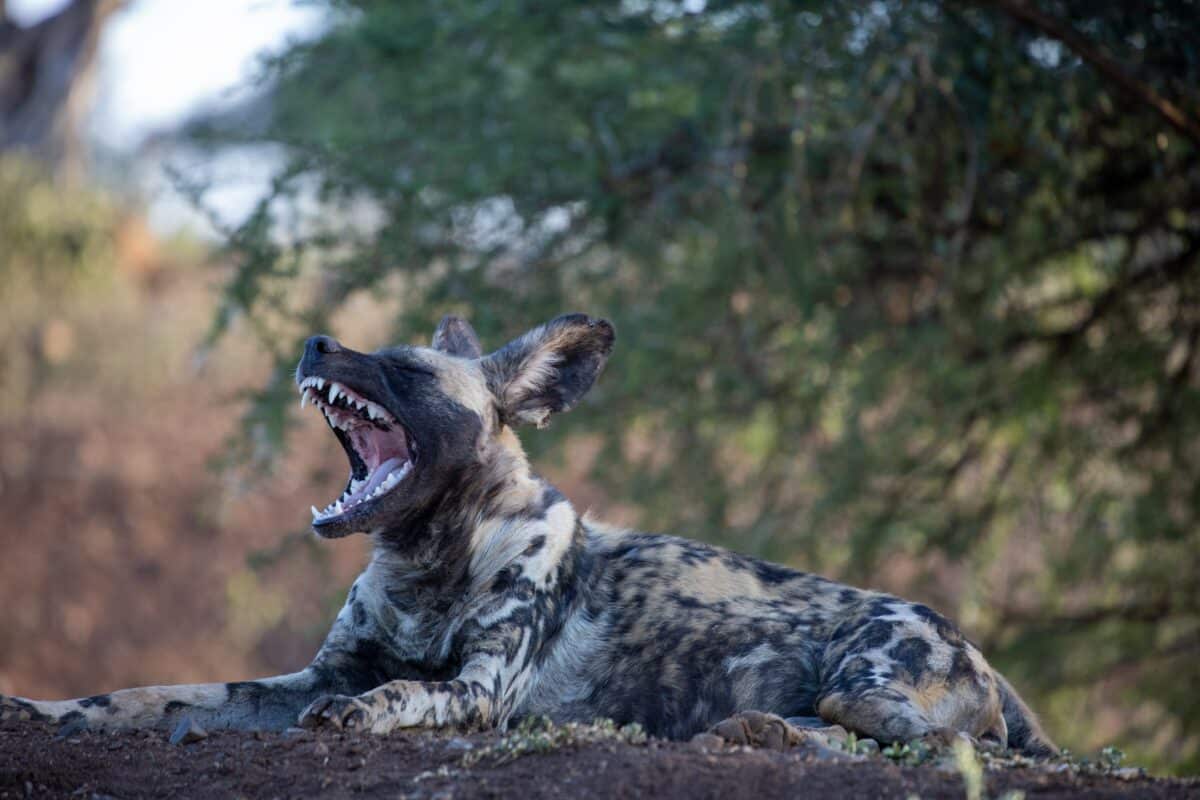
Although joining the efforts later on, Gorongosa National Park is demonstrating its potential to become a crucial sanctuary for African wild dogs. In alignment with the Carr Foundation’s 20-year plan to restore Gorongosa to its former wilderness glory, 14 wild dogs were introduced to this protected area earlier this year.
The park has ambitious plans for future reintroductions, making it an exciting destination to keep an eye on. Considering the upcoming projects, it’s advisable to start planning your trip before the broader public discovers this remarkable spot.
Mana Pools, Zimbabwe
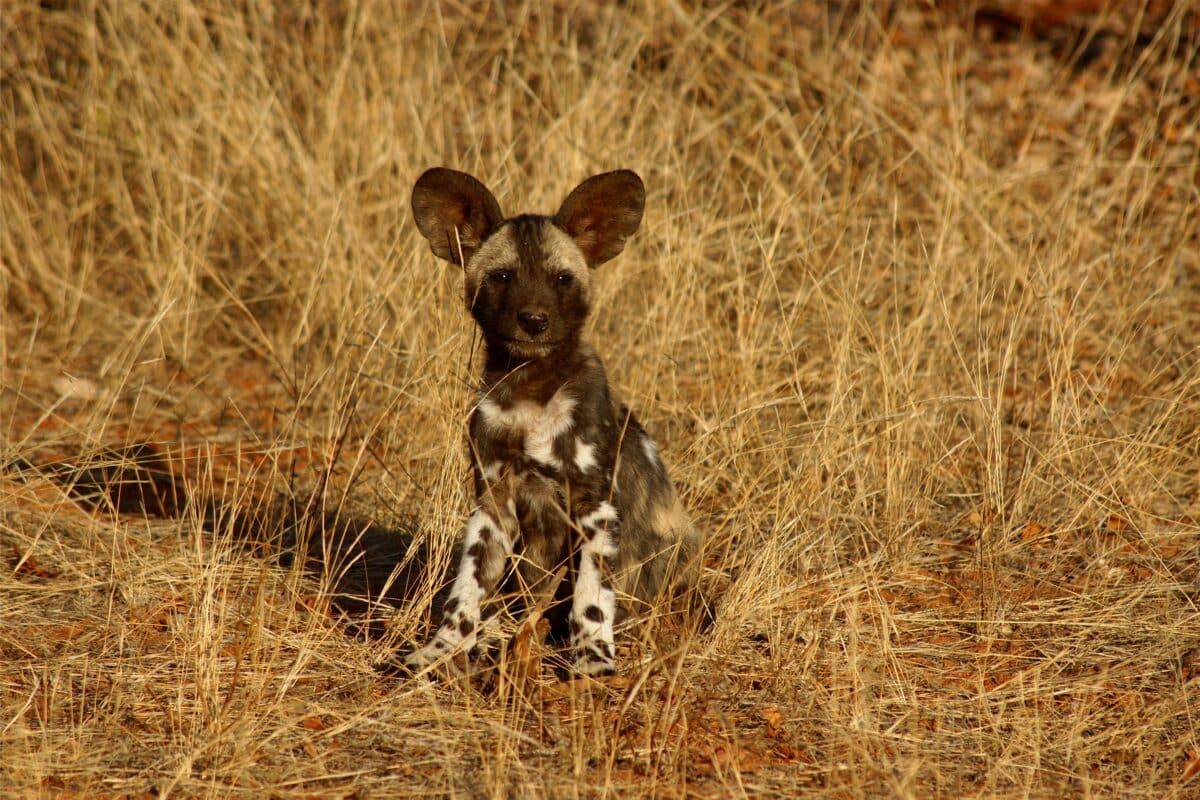
Last but not least, we must mention Mana Pools in Zimbabwe, a location where a Dynasties episode was filmed, and you might even catch a glimpse of one of the show’s stars! For an immersive experience, consider staying at Vundu Camp, the base for the BBC team during filming.
Observing African wild dogs from a vehicle is one thing, but Mana Pools offers a unique opportunity to trek on foot with some of the finest walking guides on the continent in search of these elusive creatures. It’s the place to be if you ever desire a profound connection with nature!
In conclusion, these are our recommendations for the prime locations to encounter African wild dogs in southern and eastern Africa. We firmly believe that the more individuals who witness these carnivores and contribute to their conservation, the better. So, the next time your safari guide inquires, “What would you like to see today?” perhaps consider skipping the Big Five and request the presence of these magnificent animals instead.
The behavior of African Wild Dogs
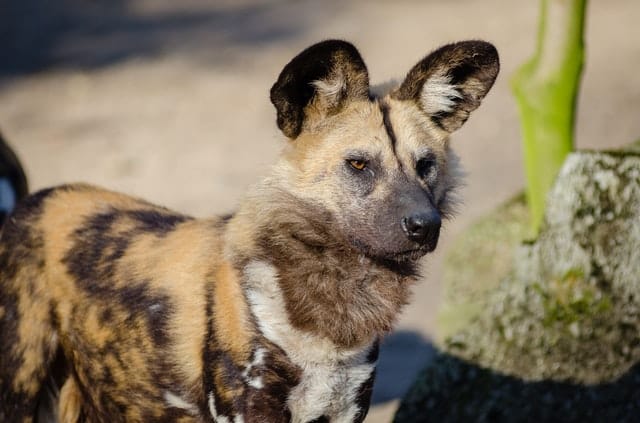
Wild Dogs are renowned for their exceptional social and intellectual traits. These African canines form packs that typically range from seven to 15 members, occasionally expanding to as many as 40 individuals. In the past, before the recent decline in population, larger groups of up to 100 were documented.
Within the pack, a distinctive social structure prevails. The dogs collaborate in caring for wounded or sick members, and there is a notable absence of aggression and intimidation within the social hierarchy. Scientists have discovered that each hunting pack features a dominant pair. All other members of the pack are subordinate to this alpha pair, with the alpha pair usually being the sole monogamous pair for life. Wild dogs exhibit a broad range of vocalizations, including a brief alarm bark, a rallying howl, and a bell-like contact call audible over long distances. Their intricate greeting rituals are accompanied by melodious twittering and whining.
Hunting and Diet
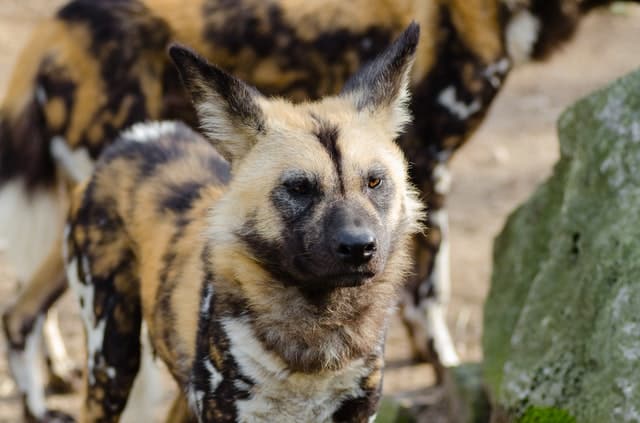
Wild dogs are adept, high-stamina hunters, capable of sustaining a pace of 40km/h over five kilometers and reaching bursts of more than 60km/h for short distances. During the hunt, the pack employs a strategy where some dogs attempt to drive the prey in a circular motion towards the others. For an exciting account of such a chase, you can read one of our articles detailing the thrilling pursuit between a springbok and a wild dog pack.
In case this initial approach proves unsuccessful, the dogs persist with determination, employing relay tactics to increase the pace. They nip and tear at the fleeing prey each time it slows down, running it to exhaustion. Once the prey collapses, the dogs promptly commence feeding, even before the animal succumbs to blood loss.
In contrast to the noisy and chaotic feasting of hyenas, wild dogs exhibit a restrained and orderly demeanor at the kill. The young ones are given priority during feeding, followed by subordinate males and females, while the alpha pair has the liberty to eat at any time. Each dog patiently awaits its turn, and if the available food is insufficient, the hunt resumes.
Subordinate females play a supportive role to nursing wild dog females remaining in the den. After consuming their share of food, they return to the shelter to regurgitate remains for the mother and her offspring to consume.
10 Interesting facts about Painted Wolves
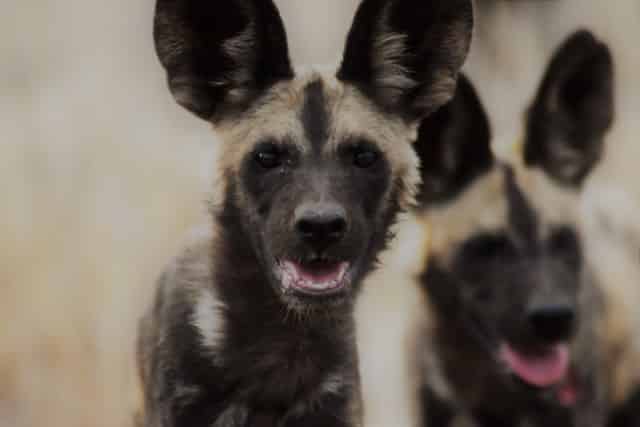
Painted wolves (African wild dogs) are misunderstood and not as well known as Africa’s other predators. For starters, they are not dogs or wolves. They are critically endangered, with only about 5,000 to 6,000 adults left in the wild, and sightings of these graceful predators are rare outside of specific areas.
1. Unique Physique
Known scientifically as Lycaon pictus, these creatures are aptly named the painted wolf, a nod to their distinctive fur adorned with a mix of black, brown, yellow, and white hues. Each member of their species boasts a unique coat pattern, facilitating individual identification.
Equipped with a formidable set of skills, they possess a powerful bite, featuring specialized molars designed for shearing meat and breaking bones. Their senses are extraordinary, with sharp eyesight, acute sense of smell, and exceptional hearing. Characterized by large, rounded ears equipped with numerous muscles, they can swivel like radar dishes, capturing even the faintest sounds. With long legs, a sleek physique, and rapid muscle recovery, these animals are adept endurance hunters, making them a formidable presence in the wild.
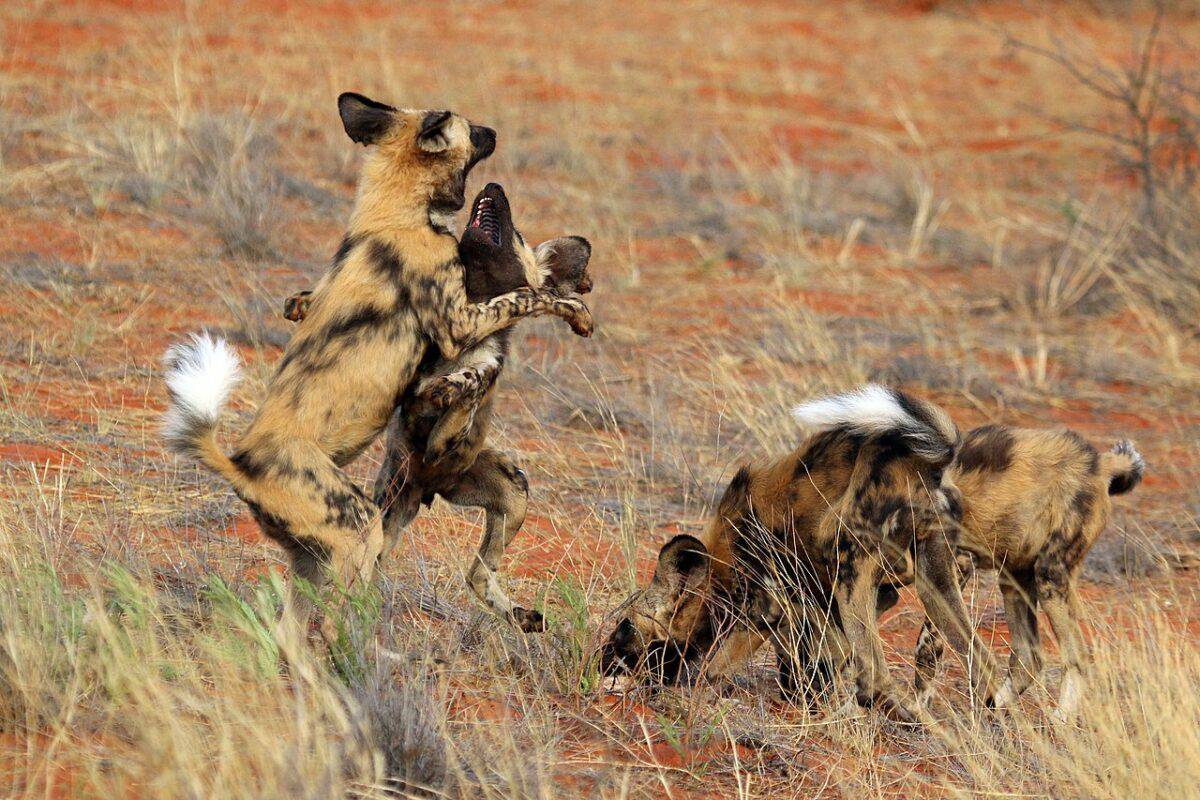
The social structure within a painted wolf pack unfolds as a captivating and almost altruistic system. Much like other pack animals, a well-defined hierarchy governs their interactions, with the matriarch assuming a dominant role, and the alpha pair typically being the exclusive breeders. Surprisingly, when a litter of pups arrives, they become the top priority, even superseding the alphas.
Initially, pack members regurgitate fresh meat for the young pups upon returning from a hunt. However, as the pups mature, they are escorted to the kill site, given the first choice over the spoils. Meanwhile, the adult members of the pack patiently wait on the sidelines, standing guard until it’s their turn to partake in the feeding ritual.
3. Females rule
At the heart of the pack, the alpha female assumes a pivotal role, guiding the group from its inception until her demise. As the leader, she fulfills the roles of a general, decision-maker, and nurturing mother. When her leadership comes to an end, the pack undergoes a division, with males and females venturing in distinct directions to establish new groups.
4. Nomadic nature
Nomadic in nature, painted wolves cover a daily distance of up to 50km, leading to territories that span from 400 to 1500 square kilometers. Their tendency to settle in one area is primarily observed during denning periods.
5. Coordinated when hunting
The 80% success rate in painted wolf hunts can be attributed mainly to the collaborative nature of the pack. Communication is crucial; the pack members constantly let one another know their location and prey. Their high intelligence and teamwork allow them to adapt to changing scenarios during a hunt.
6. Enemies – man, and beast
The most significant threat to the survival of painted wolves is undeniably posed by humans. Historically labeled as ‘pests,’ these animals were subjected to large-scale extermination efforts, even endorsed by conservation authorities (as detailed in the next paragraph). While there are recorded instances of painted wolves killing livestock when other prey is scarce, no documented cases exist of them attacking humans. Unfortunately, livestock farmers frequently resort to killing painted wolves, falling victim to snares and poison intended for other wildlife.
Diseases, particularly rabies often contracted from domestic dogs, pose another substantial risk to painted wolves. Given their highly social nature, a single rabid individual can swiftly infect the entire pack, leading to the potential eradication of the entire group. In the wild, lions emerge as the primary threat to painted wolves, and regions with high lion populations tend to have lower painted wolf numbers. Other predators, including hyenas, leopards, and pythons, pose threats, especially to young painted wolves.
In the past, colonial administrations provided substantial bounties for every painted wolf killed, and visitors were permitted to shoot them at will in numerous protected parks across Africa. In what is now Zimbabwe, formerly Rhodesia, painted wolves were categorized as ‘problem animals’ until 1977. A stark illustration of this attitude is reflected in the staggering figure of 3,404 painted wolves destroyed in vermin control operations in just the year 1975.
8. Relationship values
The alpha pair maintains a monogamous relationship and typically serves as the exclusive breeding couple within the pack. However, on occasion, a beta couple may also give birth to pups, which are either adopted or killed by the alpha pair. Each litter ranges in size, with the number of pups falling between four and twelve.
In a departure from the norm observed in most pack animals, male painted wolves remain within their pack’s territory upon reaching sexual maturity. Conversely, females undertake extensive journeys to seek a mate and establish or join a new group. This behavior serves as an effective strategy to counteract inbreeding.
9. Interesting genetics
Once prevalent across the African continent, painted wolves are now confined to countries in the southern and eastern regions of Africa, with key strongholds in Botswana’s Okavango Delta and Tanzania’s Selous Game Reserve. Notably, East African-painted wolves exhibit slightly smaller sizes compared to their southern counterparts.
This species is further categorized into five subspecies: the Cape, East African, West African, Chadian, and Somali. However, there is ongoing debate about the genetic diversity among these subdivisions. Despite sharing a common ancestor with wolves from several million years ago, painted wolves are not genetically compatible with other canids, preventing interbreeding. The selective breeding methods employed for domesticated dogs, which resulted in various breeds, are not applicable to painted wolves.
10. They cannot be domesticated
Efforts to domesticate painted wolves have been unsuccessful, as they inherently harbor a distrust toward humans and any animals outside their pack. The historical domestication of dogs by humans was facilitated by specific character traits inherent in canines that could be enhanced through selective breeding. A notable trait was the willingness of dogs to be touched by humans.
This, coupled with curiosity and opportunism, laid the foundation for humanity’s cherished symbiotic relationship with an animal commonly referred to as “man’s best friend.” Painted wolves, however, have never exhibited these particular traits, making it improbable that they ever will.
Threats
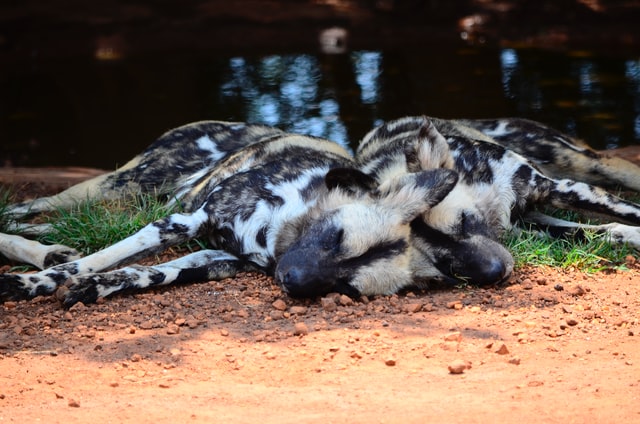
Wild dogs face substantial threats to their survival, including unintentional and deliberate killings by humans, viral diseases such as rabies and distemper, habitat depletion, and competition with larger predators like lions.
Conflict arises when wild dogs interact with individuals whose livelihoods heavily rely on livestock and agriculture. Issues emerge as expanding human activities lead to a reduction in the available prey habitat for wild dogs.
Regrettably, the IUCN Red List reports these dogs as endangered. In the past, packs comprised nearly 100 dogs, but currently, the average pack size has dwindled to around 15 dogs.
Summary of The 5 Best Places to See African Wild Dogs
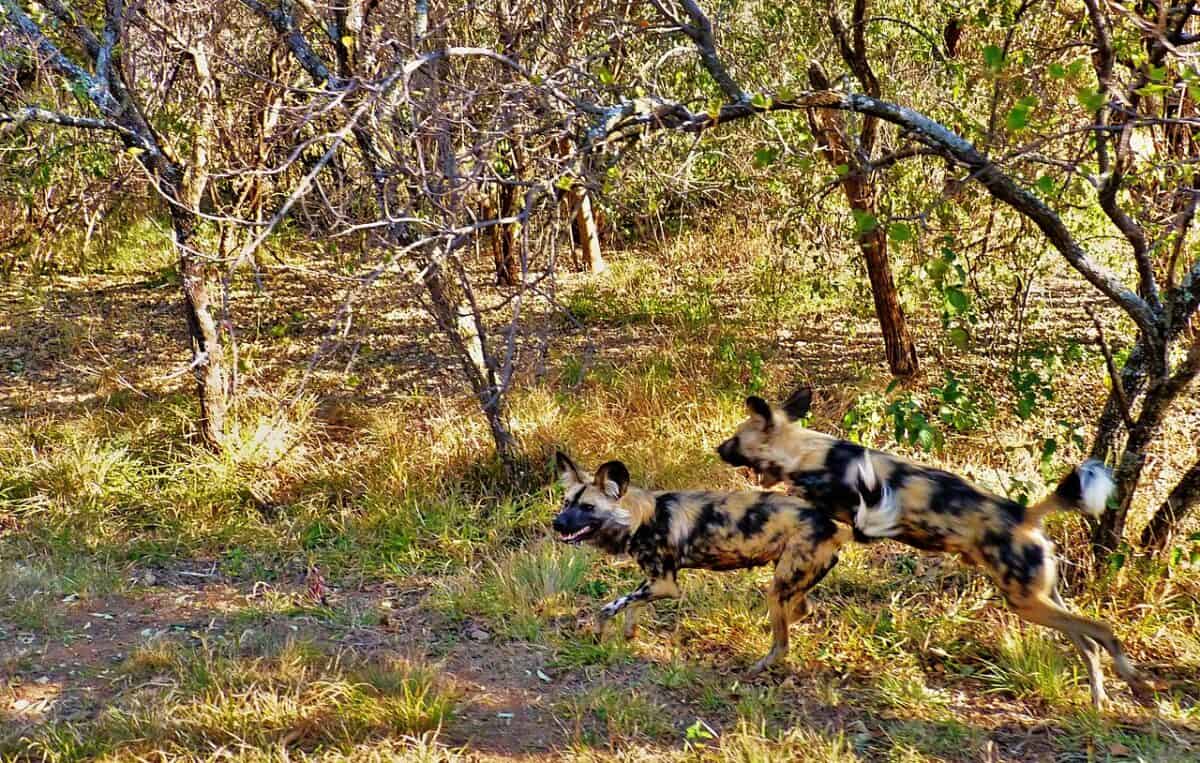
These stunning animals are in danger and are worth protecting at all costs. Finding out where to see African wild dogs could be critical to their survival in the future.
Thank you for reading about African Wild Dogs.
If you enjoyed reading this blog, perhaps read other blogs of ours, including Visit Africa for a trip of a lifetime, all about the safari parks in Africa and Cheetahs.
Frequently asked questions (FAQ)
Q1: Where can I see African wild dogs in South Africa?
A1: The best place to see African wild dogs in South Africa is the south of Kruger National Park and surrounding game reserves such as Thornybush.
Q2: Which country has a high population of African wild dogs?
A2: Botswana, particularly the Okavango Delta, is known for having one of the highest populations of African wild dogs in the world.
Q3: Are there any national parks in Tanzania where I can spot African wild dogs?
A3: Yes, Ruaha National Park in Tanzania is home to one of the largest populations of African wild dogs in the world.
Q4: Are there any emerging destinations to see African wild dogs?
A4: Gorongosa National Park in Mozambique is showing promising signs of becoming an important area for African wild dogs, with reintroduction efforts and future projects underway.
Q5: Can I see African wild dogs on foot?
A5: Yes, if you visit Mana Pools in Zimbabwe, you have the opportunity to trek on foot with experienced guides and increase your chances of encountering African wild dogs up close.
Q6: Are there any tour operators that specialize in African wild dog safaris?
A6: Yes, some tour operators that can assist you in sighting African wild dogs include Wild Dog Safaris, Rock Jumper Wildlife Tours, and African Overland Tours.
Q7: Are African wild dogs easy to spot during a safari?
A7: African wild dogs can be elusive, and sightings are not guaranteed. However, visiting the recommended locations during the right seasons increases your chances of encountering them.
Q8: How endangered are African wild dogs?
A8: African wild dogs are critically endangered, with a declining population of only around 5,000 to 6,000 adults left in the wild. Conservation efforts are crucial for their survival.
Q9: Can I contribute to the conservation of African wild dogs?
A9: Yes, you can support organizations and initiatives that focus on African wild dog conservation. Additionally, practicing responsible tourism and spreading awareness about these endangered animals can make a difference.
- 5 Best Places to See African Wild Dogs - April 24, 2024
- Best Places to See Giant Pandas - April 23, 2024
- Sea Snakes: A Complete Guide - April 23, 2024

